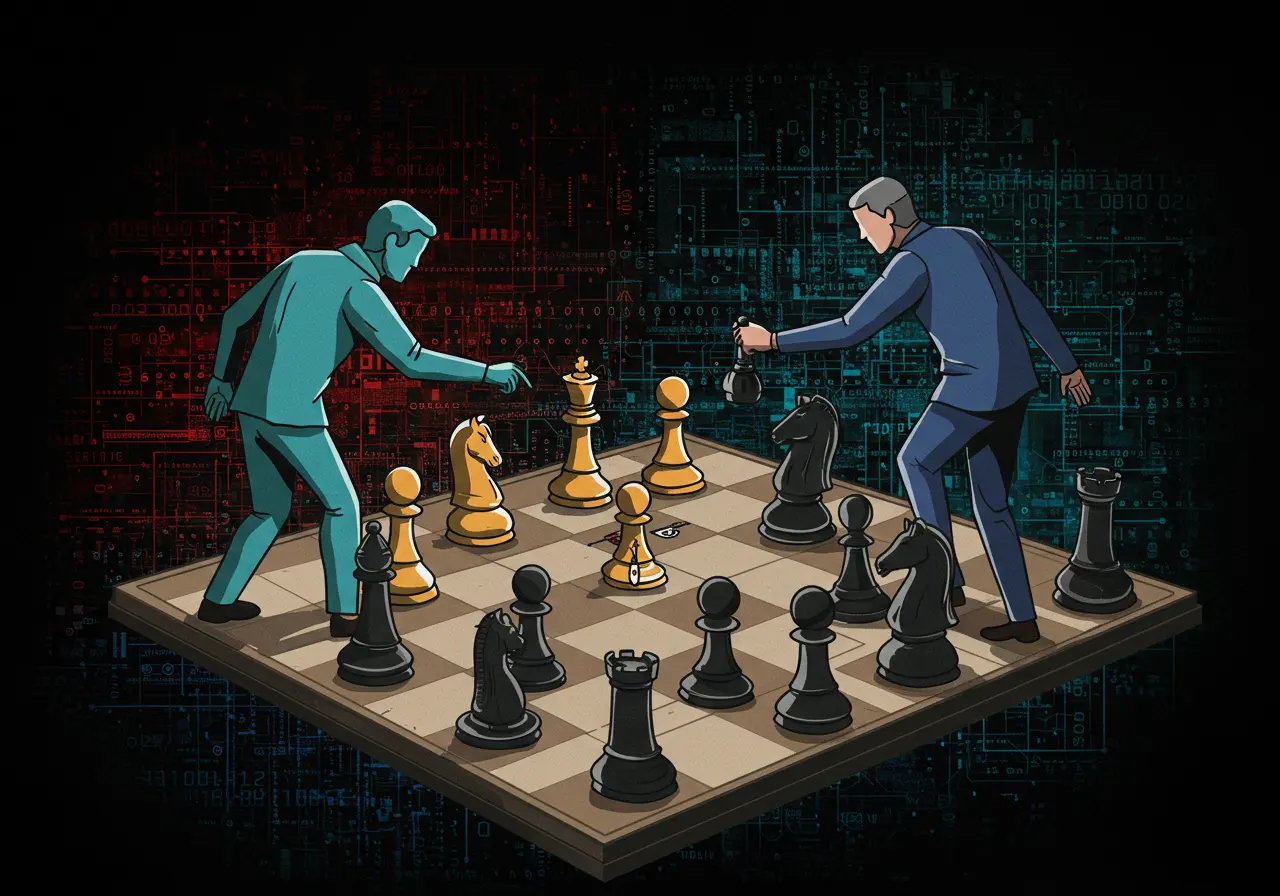Cryptoanalysis Explained: Why It Matters for Security
In fact, cryptoanalysis is simply the art and science of studying secret codes and figuring out how to break them—or at least test how strong they are. And believe it or not, it touches your life every single day, whether you realize it or not.
What is Cryptoanalysis?
To put it simply, cryptoanalysis is about understanding and testing encryption. Encryption is what keeps your messages, passwords, bank details, and even medical records private. Without it, every bit of personal information online would be up for grabs.
So why is this important? Imagine leaving your front door unlocked in a crowded neighborhood. That’s what weak encryption would look like. Cryptoanalysis steps in to check whether the “lock” on your digital door is strong enough.
The Importance of Cryptoanalysis

The importance of cryptoanalysis lies in one main truth: if we don’t know how codes can be broken, we don’t know how to build them strong enough. It acts as a reality check for digital security.
Companies, governments, and individuals all rely on digital systems that need to be tested. By applying cryptoanalysis, experts can identify weaknesses before hackers do.
- Without cryptoanalysis, encrypted systems might appear “safe” but could be fragile.
- It provides feedback for cryptographers (the people who design the codes).
- It helps us balance safety and usability in everyday technology, from mobile apps to online banking.
In other words, it’s the hidden shield that keeps digital life standing firm.
A Short Walk Through the History of Cryptoanalysis
If you think cryptoanalysis is new, you’d be surprised. The history of cryptoanalysis goes back centuries.
- In ancient times, people already tried to hide messages using symbols or shifted alphabets. Julius Caesar used one of the earliest known techniques, now called the “Caesar cipher.”
- During World War II, the world saw cryptoanalysis on full display when experts cracked the German Enigma machine, changing the course of the war.
- Today, cryptoanalysis has moved far beyond paper codes. It deals with complex algorithms that protect trillions of online transactions every day.
Looking back helps us see that the same logic applies: the stronger the lock, the smarter the people trying to test it need to be.
Techniques for Cryptoanalysis
Let’s get a little closer to how it works, but without drowning in technical details. Here are some techniques for cryptoanalysis explained in plain language:
- Brute Force Attack
Think of it like trying every key on a giant key ring until one opens the lock. It’s time-consuming but sometimes works. - Frequency Analysis
In old codes, certain letters showed up more often. By studying patterns, analysts could guess which symbols matched real letters. - Side-Channel Attacks
Instead of breaking the code directly, this method looks for small “leaks” of information, like the time it takes to process something or even the sound of a device. - Mathematical Approaches
Modern encryption is based on math problems that are difficult to solve. Cryptoanalysis explores whether those problems are truly unsolvable or just hard enough.
Each of these techniques helps reveal whether our systems are solid or shaky.
The Relationship Between Cryptoanalysis and Cryptography
Here’s where things get interesting. Some people confuse cryptoanalysis with cryptography. They’re related but not the same.
- Cryptography is about building codes to keep things safe.
- Cryptoanalysis is about testing or breaking those codes to ensure they hold up.
They’re like two sides of the same coin, constantly challenging each other. Cryptographers build walls, while cryptoanalysts test how strong those walls are. Together, they make sure our digital security keeps evolving.
Impact of Cryptoanalysis on Encryption

When you hear “encryption,” think of it as wrapping your data in a locked box. The impact of cryptoanalysis on encryption is that it forces these boxes to get stronger over time.
If cryptoanalysts never challenged encryption, hackers would always be one step ahead. Thanks to ongoing testing, encryption evolves—like upgrading from a simple padlock to a digital safe with multiple layers of security.
That’s why the credit card transactions you make today are safer than those made ten years ago. It’s the unseen work of cryptoanalysis shaping encryption into something more reliable.
Applications of Cryptoanalysis in Modern Technology
It may sound far away from daily life, but applications of cryptoanalysis in modern technology are everywhere:
- Online Banking: Your money transfers depend on strong encryption tested by cryptoanalysis.
- Healthcare: Patient data must remain private. Weak systems could expose sensitive records.
- Messaging Apps: End-to-end encryption is constantly tested so private chats stay private.
- National Security: Governments use cryptoanalysis to protect secrets and understand threats.
Even when you log into your email, you’re indirectly depending on years of cryptoanalysis research to make sure no one else gets in.
Benefits of Cryptoanalysis in Cybersecurity

In the bigger picture, the benefits of cryptoanalysis in cybersecurity can’t be overstated:
- Prevention: Finds flaws before hackers can use them.
- Trust: Builds confidence in online systems, encouraging people to use them.
- Adaptation: Keeps encryption methods up to date against evolving threats.
- Resilience: Ensures that even if one layer is broken, others can still protect information.
Cybersecurity would collapse without this constant back-and-forth.
Challenges in Cryptoanalysis
Of course, it’s not easy. There are real challenges in cryptoanalysis today:
- Complexity: Modern algorithms are designed to resist attack, making analysis harder.
- Resources: It often requires powerful computers and large amounts of time.
- Ethics: Using cryptoanalysis for good is vital, but in the wrong hands, it becomes a weapon.
- Balance: Striking the right balance between privacy and security is always tricky.
These challenges remind us that while cryptoanalysis is powerful, it isn’t magic. It demands effort, ethics, and constant innovation.
The Future of Cryptoanalysis in Information Security
Looking ahead, the future of cryptoanalysis in information security will likely be shaped by two big factors: quantum computing and AI.
- Quantum Computing: This technology could break some of today’s strongest encryptions in seconds. That means cryptoanalysis will need to adapt to a new battlefield.
- Artificial Intelligence: AI might automate parts of cryptoanalysis, making testing faster and more precise.
The future is uncertain, but one thing is clear: cryptoanalysis will remain at the heart of how we protect information.
Bringing It All Together
So, what does this all mean for you and me? It means that behind every safe online purchase, private message, or digital transaction, there’s a hidden battle happening. On one side, cryptographers create systems to protect us. On the other, cryptoanalysts push and test those systems to make sure they’re unbreakable.
And in the end, we’re the ones who benefit. Because every time they clash, our digital lives get a little safer.
Key Takeaways in Bullet Points
- Cryptoanalysis is the study of testing and breaking encryption.
- It ensures the safety of online communication, banking, and personal data.
- The history of cryptoanalysis shows it has shaped wars, technology, and society.
- Techniques for cryptoanalysis include brute force, frequency analysis, side-channel attacks, and mathematical methods.
- It works hand in hand with cryptography—one builds, the other tests.
- The impact of cryptoanalysis on encryption makes digital locks stronger.
- Its applications are everywhere, from healthcare to national security.
- Benefits include prevention, trust, adaptation, and resilience.
- Challenges include complexity, ethics, and the rise of quantum computing.
- The future of cryptoanalysis in information security will rely on adapting to new technologies like AI and quantum systems.
Table of Contents

Hello, I’m Edmilson Dias, founder of CoinBringer. I created this platform to guide people through the fast-moving world of cryptocurrency with clarity and safety. With years of research in blockchain and digital security, my goal is to translate complex topics into practical knowledge, offering reliable tutorials, safety insights, and guidance for both newcomers and experienced users.
Discover more from CoinBringer
Subscribe to get the latest posts sent to your email.







